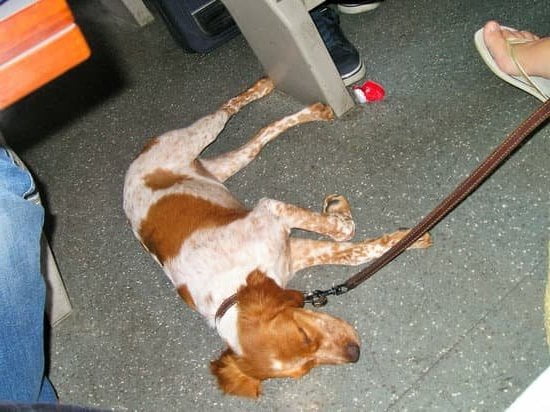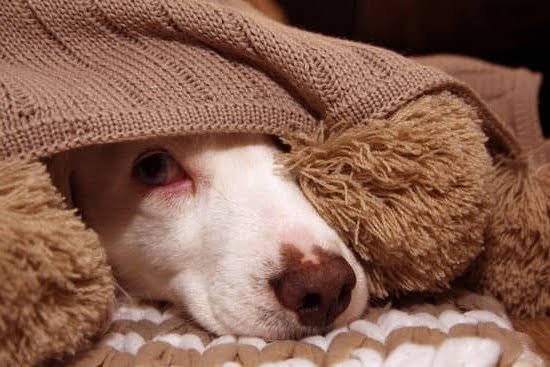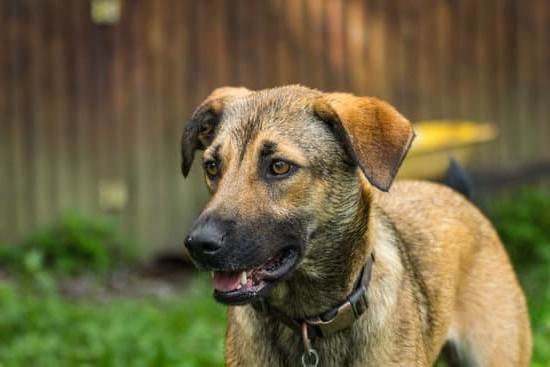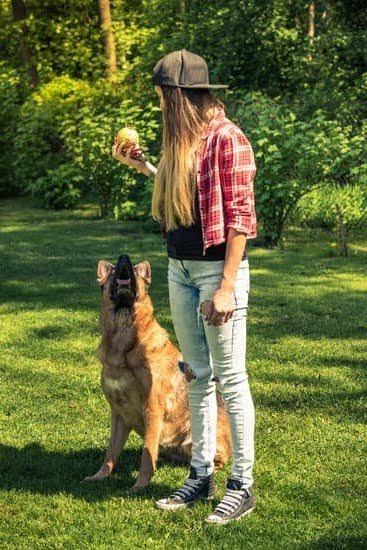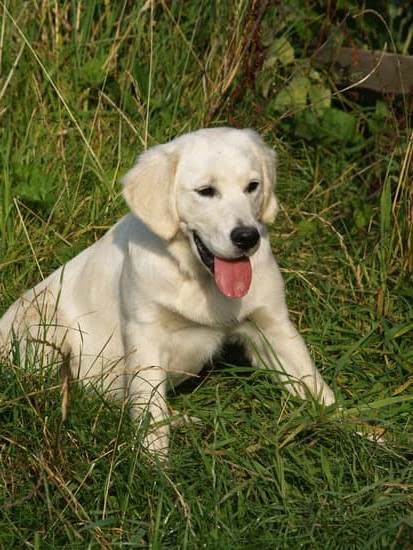Proper potty training is an essential aspect of owning a dog, and teaching them to go outside can be a challenging but rewarding experience. By following a systematic and patient approach, you can help your furry friend develop good bathroom habits and establish a lifelong habit of outdoor elimination. This article will guide you through the process of potty training your dog, from understanding their bathroom needs to troubleshooting common issues that may arise along the way.
Potty training serves several important purposes beyond simply preventing indoor accidents. It helps dogs maintain cleanliness and hygiene, prevents damage to your home from urine or feces, establishes clear boundaries for eliminating waste, and strengthens the bond between you and your pet through shared learning experiences. Additionally, teaching your dog how to go outside will make traveling with them more convenient and allow for greater freedom in various environments.
To effectively train your dog to potty outside, it is crucial to understand their bathroom habits and needs. Dogs have natural instincts when it comes to elimination, often establishing routines for when they need to relieve themselves.
By observing their behavior closely and recognizing signs such as circling or sniffing the ground, you can anticipate their need to go and take appropriate action. In addition, setting up a suitable environment within your home will help set the foundation for successful potty training.
The Basics
Understanding your dog’s bathroom habits and needs is a crucial first step in potty training. By observing and recognizing patterns in their behavior, you can effectively teach them when and where to go. Here are some key factors to consider when understanding your dog’s bathroom habits:
- Frequency: Dogs generally need to relieve themselves multiple times a day, with puppies requiring more frequent bathroom breaks. The frequency will depend on their age, size, and overall health. Keeping track of your dog’s bathroom schedule will help you anticipate when they need to go outside.
- Timing: Dogs often need to eliminate shortly after waking up, after meals or playtime, and before bedtime. Additionally, they may show signs of needing to go out such as pacing, circling, sniffing the ground, or scratching at the door. Being aware of these cues is essential for successful potty training.
- Location Preference: Dogs have a natural instinct to eliminate in areas with specific smells or surfaces. For example, some dogs prefer grass while others may prefer gravel or dirt patches. Take note of where your dog chooses to go naturally and try to replicate that environment when teaching them to potty outside.
To better understand your dog’s bathroom habits and needs, keep a log of their elimination schedule for at least one week. Record the time of day they typically go outside, any signs they display before needing to eliminate, and their preferred location if applicable. This information will serve as a valuable reference as you move forward with potty training.
In addition to understanding their habits, it’s important to recognize the signs that indicate your dog needs to go outside urgently. These signs may include restlessness, whining or barking at the door, pacing back and forth near an exit point, or suddenly becoming hyperactive after being calm for some time.
By familiarizing yourself with these aspects of your dog’s bathroom habits and needs, you’ll be able to set the foundation for successful potty training and create a tailored routine that suits their specific requirements.
Setting the Foundation
Before you begin potty training your dog to go outside, it is important to set the foundation by preparing your home for the process. By creating a suitable environment, you can help your dog understand where they should eliminate and make the training process smoother and more effective.
- Designate a specific potty area: Choose a designated spot in your yard where you want your dog to do their business. This area should be easily accessible and conveniently located so that both you and your furry friend can easily reach it. Use cues such as verbal commands or visual markers like flags or scented sprays to help your dog recognize this area as their bathroom spot.
- Remove indoor elimination options: Before starting potty training, remove any indoor elimination options such as pee pads or litter boxes. It is important for your dog to understand that they should only eliminate outside. This will prevent confusion and help them develop the habit of going outdoors.
- Clean up accidents thoroughly: Accidents are bound to happen during potty training, but it is crucial to clean them up thoroughly using an enzymatic cleaner specifically designed for pet messes. Regular household cleaners may not completely remove the odor, which can attract your dog back to the same spot for future eliminations.
- Limit access to certain areas: While potty training, it may be helpful to limit your dog’s access to certain areas of the house where accidents are more likely to occur. Use baby gates or closed doors to block off rooms or areas that are difficult to supervise.
By setting the foundation through these steps, you are creating an environment that supports successful potty training for your dog. Consistency is key during this process, so be patient and persistent in reinforcing the boundaries set within your home.
Crate Training
Crate training is an effective method for potty training dogs, as it helps teach them when and where to go. The use of a crate can create a safe and den-like space for dogs, which can aid in their ability to hold their bladder and bowel movements. This section will provide tips and guidelines on how to properly utilize crate training as a tool for potty training your dog.
When starting crate training, it is important to choose the right size crate for your dog. The crate should be large enough for the dog to stand up, turn around, and lie down comfortably, but not too spacious that they can use one end of the crate as a bathroom area. Introduce the crate gradually by making it a positive and comfortable place for your dog. Place treats or toys inside the crate to encourage your dog to enter voluntarily.
To effectively use the crate for potty training, establish a routine where your dog spends specific amounts of time in the crate. Take your dog outside to eliminate immediately after they are let out of the crate. This will help enforce the association between being in the crate and going outside to do their business. It is important not to keep your dog in their crate for too long, as this could lead to accidents and discomfort.
Additionally, remember that using the crate should not be a form of punishment or confinement. It should be used as a positive tool in teaching your dog good bathroom habits. Do not leave your dog in their crate for extended periods without breaks or playtime outside of the crate.
| Size | Dog Breed | Approximate Weight |
|---|---|---|
| Small | Toy breeds (Chihuahua, Yorkshire Terrier) | Up to 12 lbs |
| Medium | Cocker Spaniel, French Bulldog, Beagle | 13-38 lbs |
| Large | Labrador Retriever, Boxer, Golden Retriever | 39-70 lbs |
| X-Large | Rottweiler, Great Dane, Saint Bernard | Above 71 lbs + |
Remember to gradually increase the amount of time your dog spends in the crate so they can gradually learn to hold their bladder and bowel movements for longer periods. With consistency and patience, crate training can be a valuable tool in potty training your dog and teaching them good bathroom habits.
Establishing a Routine
Establishing a routine is crucial when it comes to potty training your dog to go outside. Dogs thrive on consistency and structure, so creating a regular bathroom schedule will help them understand when and where they should eliminate.
Understanding Your Dog’s Bathroom Habits
Before you can establish a bathroom schedule, it’s important to understand your dog’s bathroom habits. Dogs generally need to eliminate shortly after waking up, eating, drinking water, playing, or napping. By observing your dog’s behavior, you can start to anticipate their needs and create a routine that aligns with their natural bodily functions.
Creating a Schedule
When creating a bathroom schedule for your dog, consistency is key. Choose specific times throughout the day when you will take your dog outside to eliminate. Aim for at least five to six outings per day in the beginning stages of potty training. This frequency will gradually decrease as your dog becomes more reliable in holding their bladder.
It’s helpful to use cues or commands during bathroom trips as well. For example, you can say “go potty” or “do your business” while your dog is eliminating. Eventually, they will associate these cues with the act of going to the bathroom and it will become easier for them to understand what is expected of them.
Ensuring Success
To increase the likelihood of success during each outdoor trip, make sure you give your dog enough time to fully empty their bladder or bowels. Avoid rushing them or interrupting the process prematurely. It may take some trial and error to determine how much time your individual dog needs for elimination.
Consistency is also important when it comes to rewarding your dog for successfully going outside. Immediately after they have finished eliminating in the desired area, provide praise, treats, or affection as positive reinforcement for their good behavior. This helps reinforce the connection between going outside and receiving rewards, further encouraging them to repeat the behavior in the future.
By creating a consistent bathroom schedule for your dog, you are setting them up for success in their potty training journey. Remember to be patient and persistent, as it may take time for your dog to fully understand the routine. With dedication and consistency, your furry friend will soon develop a lifelong habit of going outside to eliminate.
Positive Reinforcement
Positive reinforcement is an essential aspect of potty training dogs to go outside. By using reward-based techniques, you can encourage your dog to eliminate outdoors and reinforce this desired behavior. Here are some effective strategies to implement positive reinforcement in your dog’s potty training:
- Treats: Use small, easily manageable treats as rewards when your dog successfully eliminates outside. Give the treat immediately after they finish their business so that they associate the behavior with the reward. Over time, you can gradually reduce the frequency of treat rewards as your dog becomes more consistent in eliminating outside.
- Verbal praise: Dogs thrive on praise and positive attention from their owners. When your dog eliminates outside, shower them with praise, such as saying “good job” or “well done.” Use an enthusiastic tone to convey your excitement and satisfaction with their behavior. This verbal praise helps to reinforce the understanding that eliminating outdoors is a positive action.
- Playtime and affection: In addition to treats and verbal praise, incorporating playtime or affection can also be rewarding for your dog during potty training. After they successfully eliminate outside, engage in a short session of play or give them extra cuddles and pets as an additional form of positive reinforcement.
- Clicker training: Clicker training is a popular technique used in dog training that pairs a distinctive sound (from a clicker) with rewards. This helps dogs understand that the sound signifies a correct behavior followed by a reward. Whenever your dog eliminates outdoors, use the clicker immediately after they finish, followed by giving them a treat or praise.
Remember that consistency is key when using reward-based techniques for potty training. Reinforce good behaviors every time they happen and make sure rewards are given immediately after successful elimination outdoors. With patience and persistence, positive reinforcement can help create lasting habits and encourage your furry friend to consistently go potty outside.
Avoiding Accidents Indoors
Accidents happen, especially during the potty training process. However, there are strategies that can help you manage and prevent mishaps indoors as you work towards successfully potty training your dog to go outside.
One important strategy is to closely supervise your dog at all times, especially during the early stages of potty training. Keeping a close eye on your dog allows you to quickly intervene and redirect them if they show signs of needing to eliminate indoors. This could include sniffing around, circling, or squatting. If you notice any of these behaviors, immediately take your dog outside to their designated potty area.
Another helpful strategy is to limit your dog’s access to certain areas in your home during the potty training process. Use baby gates or closed doors to keep your dog confined to a smaller space where accidents can be easily cleaned up and supervised more closely. As your dog becomes more reliable with their bathroom habits, gradually increase their access to other areas of the house.
Consistency is key when it comes to preventing accidents indoors. Make sure you stick to a consistent feeding schedule for your dog as this will help regulate their bathroom habits. Generally, dogs need to eliminate within 30 minutes after eating. Additionally, take your dog outside frequently throughout the day, especially after naps or playtime. By establishing a routine and being consistent with outdoor trips, you can greatly reduce the likelihood of accidents indoors.
| Strategy | Description |
|---|---|
| Closely supervise your dog | This helps in quickly intervening and redirecting them if they show signs of needing to eliminate indoors. |
| Limit access to certain areas | Using baby gates or closed doors to keep your dog confined to a smaller space where accidents can be easily cleaned up and supervised more closely. |
| Stick to a consistent routine | Establishing a consistent feeding schedule and taking your dog outside frequently throughout the day reduces the likelihood of accidents indoors. |
By implementing these strategies, you can effectively manage and prevent indoor accidents during the potty training process. Remember, patience and consistency are key, and with time and effort, your dog will learn to reliably go potty outside.
Troubleshooting
Identifying and Addressing Problematic Behaviors
While potty training your dog, you may encounter various challenges and common issues that can hinder progress. One of the most common problems is when your dog continues to have accidents indoors even after consistent training efforts. This can be frustrating, but it’s important to remain calm and patient as you work through these challenges.
When accidents occur, it’s crucial not to punish or scold your dog. Instead, focus on reinforcing positive behaviors and redirecting them towards the desired elimination area. If you catch your dog in the act of eliminating indoors, gently interrupt them with a distraction, such as a clap or a noise diversion, and immediately take them outside to their designated spot. Once they successfully do their business outside, reward them with praise and treats.
If your dog seems reluctant or fearful about going outside, it might indicate an underlying issue. It’s essential to determine the cause of their hesitation and address it accordingly. For instance, some dogs may have had negative experiences outdoors that have created anxiety. Gradually introducing them to the outdoor environment by starting with small trips and gradually increasing the duration can help alleviate their fears.
Dealing with Regression
Another challenge you might face during potty training is regression. Regression occurs when your dog begins having accidents again after a period of successful training. This setback can happen due to several reasons like changes in routine, moving to a new environment, or feelings of stress or anxiety.
To overcome regression, you need to re-establish consistency by revisiting the basics of potty training. Take your dog out frequently, especially after meals or naps since these are commonly associated with eliminating needs. Monitor their behavior closely indoors for any signs that they need to go outside.
It’s also beneficial to reinforce positive habits by using treats and praise when they do eliminate outside successfully. Additionally, consider increasing exercise and mental stimulation to help reduce stress levels and provide an outlet for their energy. By being patient, persistent, and staying consistent with training techniques, you can help your dog overcome regression and get back on track with their potty training.
Breaking the Habit of Indoor Elimination
If your dog has developed a habit of eliminating indoors, breaking this behavior requires proactive measures. Start by thoroughly cleaning any areas where accidents have occurred using enzymatic cleaners to remove any lingering scent. This will help prevent them from revisiting those spots.
Restricting access to certain areas of the house can also be helpful during the retraining process. Utilizing baby gates or closing doors to limit your dog’s movements can prevent accidents in unsupervised areas until they are fully trained.
Additionally, closely monitor your dog’s behavior and body language for signs that they need to go outside. Dogs often display cues such as sniffing the floor, circling, or becoming restless before eliminating. Recognizing these signs promptly and taking them outside immediately can help break the habit of indoor elimination.
Remember that addressing challenges in potty training requires understanding and adapting to your individual dog’s needs and behaviors. With patience, consistency, and positive reinforcement techniques, you’ll be able to troubleshoot common issues effectively and guide your furry friend towards successful potty training.
Patience and Persistence
Potty training a dog can be a challenging process, but with patience and persistence, it is definitely achievable. It’s important to remember that each dog is unique and may learn at their own pace. With that in mind, here are some helpful tips to help you stay committed to the training process.
Firstly, set realistic expectations. Understand that accidents will happen during the training period. It’s essential to accept this fact and not get discouraged when accidents occur. Keep in mind that your dog is learning a new behavior, and it takes time for them to fully grasp what you expect from them.
Consistency is key in potty training. Create a routine and stick to it rigorously. Take your dog outside to their designated spot every few hours, after meals, playtime, and naps. Be patient and wait for them to eliminate before going back inside. By maintaining a consistent schedule, you are helping your dog understand where and when they should go.
Another important tip is to reward success. Positive reinforcement plays a significant role in potty training dogs. When your furry friend eliminates outside, praise them enthusiastically and give them a treat or verbal affirmation as a reward. Dogs thrive on positive reinforcement because it reinforces behaviors that make you happy.
In addition to rewards, avoid punishment or scolding if your dog has an accident indoors. Punishment can confuse your dog and may lead to anxiety or fear surrounding elimination behavior. Instead of punishing them for accidents, focus on redirection by taking them immediately outside so they start associating going outside with eliminating.
Remember, consistency, positive reinforcement, and patience are crucial aspects of successful potty training. If accidents happen or setbacks occur during the process – don’t worry. It’s all part of the learning curve for both you and your pup. Stay committed to the process, celebrate small victories along the way, and before you know it, your dog will be fully potty trained and enjoying the great outdoors.
Taking It to the Next Level
Introducing the Off-Leash System
Once your dog is consistently going outside to eliminate and has mastered the basics of potty training, it may be time to take it to the next level and transition them to an off-leash system. This can provide more freedom for your dog and make potty breaks more convenient for both of you.
However, transitioning to an off-leash system requires careful planning, training, and supervision to ensure your dog’s safety and continued success in their potty training journey.
Gradual Introduction
When transitioning your dog to an off-leash system, it’s important not to rush the process. Start by gradually introducing your dog to supervised off-leash time in a secure and confined area, such as a fenced yard or an enclosed space. This will allow them to become familiar with being off-leash while still having some boundaries.
During this phase, monitor your dog closely for any signs of discomfort or anxiety. If they seem overly nervous or are not responding positively to off-leash time, take a step back and continue with on-leash potty breaks until they are more comfortable.
Reinforcement and Reward-Based Training
As you introduce your dog to the off-leash system, continue using positive reinforcement techniques to encourage outdoor elimination. When they successfully eliminate outside without prompting or accidents, praise them enthusiastically and offer rewards such as treats or playtime.
Maintaining consistency with praise and rewards during this transition period is crucial for reinforcing good behavior. It is also beneficial to establish specific verbal cues or commands that signal it’s time for your dog to eliminate when they are off-leash. This will help create a clear understanding between you and your furry companion.
Remember that each dog is unique, so the timing of transitioning from on-leash potty breaks to complete off-leash freedom will vary. Be patient and observant of your dog’s progress, making adjustments as needed to ensure their comfort and success in the process.
Conclusion
In conclusion, potty training your dog to go outside is an essential part of responsible pet ownership. By understanding your dog’s bathroom habits and needs, preparing your home for successful training, and utilizing techniques such as crate training and positive reinforcement, you can establish a routine that will set your dog up for success.
It is important to remember that potty training takes time and patience, and setbacks are normal along the way. However, with persistence and consistency in following the established routine, you can overcome challenges and prevent accidents indoors. By troubleshooting common issues and staying committed to the process, you will see progress in your dog’s ability to eliminate outdoors.
Once your dog has mastered the basic potty training skills, it’s time to take it to the next level. Gradually transitioning them to an off-leash system can provide them with more freedom while still ensuring they go in the appropriate area. This step requires careful supervision and continued reinforcement of good behavior.
Celebrating each success along the way is important for both you and your pooch. Positive reinforcement through verbal praise or treats will reinforce their good habits and motivate them to continue with their outdoor potty training. Remember, consistency is key in helping your dog develop a lifelong habit of going outside.
Frequently Asked Questions
How do I get my dog to pee when I go outside?
When trying to get your dog to pee when you go outside, it’s important to establish a routine and be consistent with it. Take your dog outside at regular intervals throughout the day, such as first thing in the morning, after meals, and before bedtime. Find a designated spot in your yard where you want your dog to go, and take them directly there each time you go outside.
Use a command like “go potty” or any other phrase consistently so that your dog starts associating that phrase with the act of elimination. Stay patient and give your dog ample time to sniff around and relieve themselves. Praise and reward them enthusiastically when they do pee outside, which will reinforce their desired behavior.
How do you potty train a dog that refuses to go outside?
Potty training a dog that refuses to go outside can be challenging but not impossible. Start by ensuring that there are no underlying medical issues causing discomfort or pain during elimination, which may deter the dog from going outside. Create a positive association with going outside by taking your dog on frequent walks and providing treats or rewards when they willingly step out of the house.
If your dog consistently refuses to potty outdoors, consider using puppy pads or creating an indoor potty area until they become more comfortable with outdoor elimination. Gradually transition from indoor pottying to going outside by progressively moving the pads closer to the door over time.
How long does it take for a dog to learn to go potty outside?
The timeframe for a dog to learn to go potty outside varies depending on several factors such as age, breed, individual temperament, and consistency in training. On average, it may take anywhere from a few weeks to several months for a dog to fully grasp the concept of eliminating outdoors consistently without accidents indoors.
Patience and consistency are key during this process; remember that accidents will happen along the way and it’s important not to scold or punish your dog for accidents but focus on reinforcing positive behaviors instead. As you establish routines, provide clear cues or specific commands related to potty time, and give regular opportunities for your dog to relieve themselves outside, they will gradually learn the desired behavior.

Welcome to the blog! I am a professional dog trainer and have been working with dogs for many years. In this blog, I will be discussing various topics related to dog training, including tips, tricks, and advice. I hope you find this information helpful and informative. Thanks for reading!

